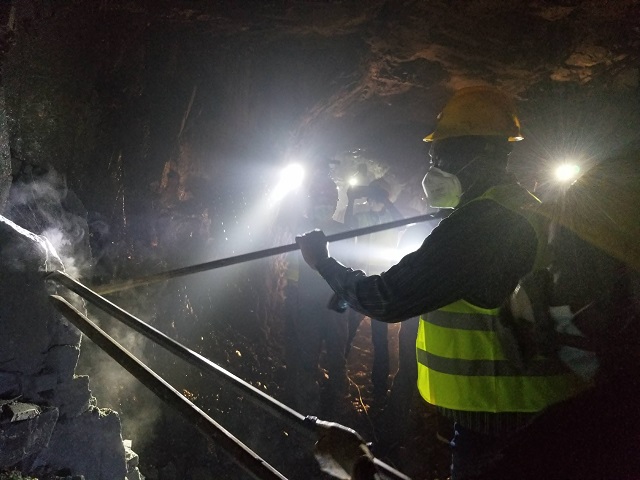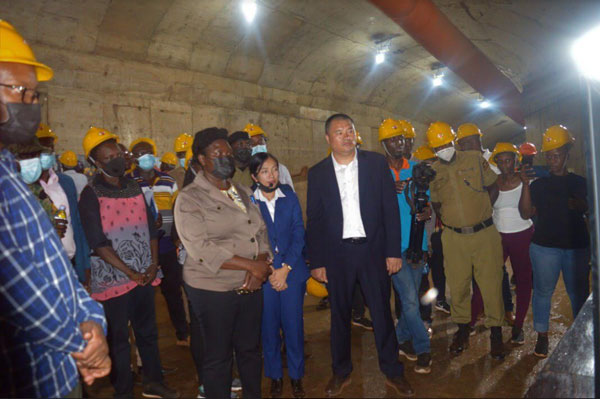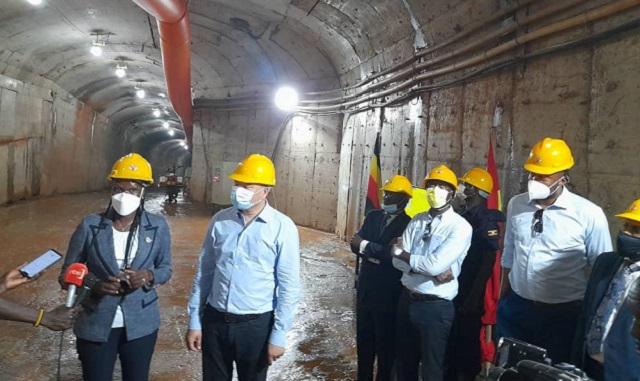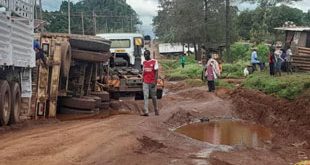
If that discovery was authentic, you would have seen the big boys here, say analysts
Kampala, Uganda | RONALD MUSOKE | Last year, on June 07, during his State of the Nation address, President Yoweri Museveni announced that Uganda had found up to 31 million metric tonnes of gold with extractable pure gold estimated to be about 320,000 metric tonnes valued at US$ 12.8 trillion.
The President said officials in the Ministry of Energy and Mineral Development had informed his Cabinet about the huge gold deposits discovered in different parts of the country, adding that Uganda stood to earn about US$700 million in royalties. Museveni’s announcement was greeted with excitement. But there was also skepticism both within and outside the country.
After President Museveni made the pronouncement, there were murmurs in the local mining industry with some experts quietly saying it is possible the figures were misinterpreted or lost in translation considering that the analysis was perhaps done in Mandarin. The mining company, Wagagai Mining (U) Limited, which did the analysis the government based upon to issue the statement is under Chinese ownership. It did not clarify the government claims.
Alex Kwatampora Binego, a mining engineering geologist who is also the current president of the Geological Society of Uganda told The Independent that he found the gold discovery figures given to President Museveni “weird.”
“In fact, the Geological Society of Uganda expressed its concerns over such an amount of gold deposits; we thought there was need for the company to come out and correct them,” he said.
Don Bwesigye Binyina, a mineral and energy policy analyst based at the African Centre for Energy and Mineral Policy in Kampala was also quick to tone down the excitement calling the discoveries anything but “mere fool’s gold.”
Quoting statistics from the U.S Geological Surveys (USGS), Binyina noted that before Museveni’s announcement, just 244,000 metric tonnes of gold, the equivalent of 268,000 tonnes or 268,000,000 kilogrammes of gold has ever been discovered across the world.
Out of this figure, the U.S Geological Surveys notes 187,000 metric tonnes (205,000 tonnes) have so far been produced leaving a balance of just 57,000 metric tonnes (62,700 tonnes) of known reserves around the world. “This implies,” Binyina noted, “Uganda’s gold discoveries surpass global gold discoveries by 115.5 times.” “Did the President confuse ounces with tonnes?”
The Independent’s attempt to verify President Museveni’s gold discovery figures from the Directorate of Geological Survey and Mines was met with evasion. “There is nothing I can say after the President has spoken. The only person who would be able to comment about those figures is the Permanent Secretary in the Ministry of Energy and Mineral Development,” one senior official told The Independent last October.
Another senior official in the Ministry of Energy and Mineral Development told The Independent that the figures read by President Museveni had probably been misinterpreted and the ministry was working with the gold company (Wagagai) to verify the figures.
Minister confirms, pundits query
But, rather than revise down Uganda’s gold deposit figures, Ruth Nankabirwa, the Minister of Energy and Mineral Development recently told journalists during a media briefing at the Media Centre, the government’s information clearing house, that new gold targets had been identified in several parts of Uganda, including Buhweju in western Uganda, Mubende in central-western Uganda, Namayingo in southeastern Uganda, Karamoja and Zombo districts in the northeast and northwest of the country, respectively.
“Significant investment has been registered in mineral exploration and development through Wagagai Mining Limited – a large-scale gold project in Busia, eastern Uganda –scheduled for commissioning in December 2023,” Nankabirwa said on Feb.21. She added: “Wagagai has discovered 30 million tonnes of gold ore in a greenstone belt in Busia district.”

Nankabirwa’s confirmation of the country’s gold deposits using Wagagai Mining Limited’s findings left independent experts like Binyina and Kwatampora frustrated.
“It’s not the correct figure but I also understand that there are different people working in this industry; you have gold mining companies and the people at the Directorate of Geological Survey and Mines and all these have different interests,” Binyina told The Independent on Feb.23.
“We perhaps need to distinguish between resources (an estimation) and reserves which are confirmed following the subjection of those resources to many tests.”
Binyina told The Independent that the Chinese investors, who have so far reportedly sunk about US$60 million and intend to invest close to US$ 200 million over the next couple of years in the mine in Busia, wouldn’t have put up such an investment if they had not done the required appraisals. Still, Binyina says, the figure stated by the government is quite huge.
“This figure implies that Uganda alone has reserves which no other country has. I don’t know whether they mean 30 million ounces or 30 million metric tonnes of gold because those two measurements are different. I expected to read 30 million ounces.”
Kwatampora has visited the Wagagai Mine in Busia. “It’s an impressive undertaking and there is no doubt that there is substantial gold in the region. They have done the drill cores; dug a lot of holes; hit and blocked several gold veins.”
“They even have an Assay laboratory which is used in the mineral industry. This is where analysis of mineral discoveries is done; how many metres of gold veins and their grade point among others.”
Still, this level of sophistication notwithstanding, the published figures look to be on the high side, he told The Independent.
Huge discoveries usually unsettle global gold market
Weeks after the government’s announcement of the vast gold deposits, Jon White, the director of Gold Traders, a UK-based firm which buys and sells gold told the London-based Mine, an NRi Digital publication, that if the Uganda discoveries were authentic, he expected “significant waves” in the global gold market.
White noted at the time that there had actually been a global decline in the value of gold, particularly in the U.S market and the U.S dollar had gained in strength. Usually, a huge gold discovery would undermine the dollar’s value. “The bottom line is larger gold reserves tend to lower the value of the metal, due to the increased supply,” White said.
Other gold experts, Aaron Hoddinott and Alexander Smith based at Pinnacle Digest noted that the validity of the Ugandan gold deposits first needed to be proven with geophysical and geochemical surveys and analyses done to the data. “Even if this was done, it would represent just step one of 20 exploratory steps needed,” they noted.
They went on to point out that the world only produces around 3,000 metric tonnes of gold every year and 80-100 grammes of gold per tonne (gold ore). They referred to the Uganda government’s figures as “insane and extremely optimistic.”

The analysts at Pinnacle Digest noted that indeed US$ 12 trillion exceeded the entire market capitalization of all gold mined ever. If there was more evidence of the deposits’ existence, the analysts noted, it could see the price of gold drop by 50% overnight.
But there was hardly any disruption on the global gold market. Major international media largely ignored the government’s announcement. Not even the World Gold Council, a global authority on gold market and industry research featured Uganda in its annual report for 2022.
The question is why?
New mineral reporting rules
The answer partly lies in the international mechanisms that have been put in place for reporting new mineral discoveries around the world. Kwatampora explained to The Independent how mineral discovery figures are reached at and reported.
“We have to be careful because the pronouncements the country makes need to apply to the CRIRSCO standards,” Kwatampora said, referring to the Committee for Mineral Resources International Reporting Standards.
A document prepared in October, 2012, by CRIRSCO shows how this is done. There is a general relationship between exploration results, mineral resources and mineral reserves. Under mineral resources, you have what is referred to as “inferred,” “indicated” and “measured” reserves with each category corresponding with the level of geological knowledge and confidence.
“The location, quantity, grade or quality, continuity and other geological characteristics of a mineral resource are known, estimated or interpreted from specific geological evidence and knowledge including sampling,” CRIRSCO noted in its policy brief.
For example, an inferred mineral resource is that part of a mineral resource for which quantity and grade or quality are estimated on the basis of limited geological evidence and sampling while an indicated mineral resource is that part of a mineral resource for which quantity, grade or quality, densities, shape and physical characteristics are estimated with sufficient confidence to support mine planning and evaluation of the economic viability of the deposit.
Meanwhile, a measured mineral resource is that part of a mineral resource for which quantity, grade or quality, densities, shape and physical characteristics are estimated with confidence and are sufficient to allow the application of modifying factors to support detailed mine planning and final evaluation of the economic viability of the deposit.
Here, geological evidence is derived from detailed and reliable exploration, sampling and testing and is sufficient to confirm geological and grade or quality continuity between points of observation. “A measured mineral resource has a higher level of confidence than that applying to either an indicated mineral resource or an inferred mineral resource,” the policy brief says, adding that, “It may be converted to a proven mineral reserve or to a probable mineral reserve.”
CRIRSCO describes a “probable mineral reserve” as an economically mineable part of an indicated mineral resource, and in some circumstances a measured mineral resource. On the other hand, a “proven mineral reserve” is one which is the economically mineable part of a measured mineral resource. This kind of reserve implies a high degree of confidence for investors after they have assessed so many intervening factors.
Have Uganda’s 30 million metric tonnes of gold ore been subjected to this kind of assessment? Binyina says this could perhaps explain why Uganda is yet to see the “big boys” of the global gold industry pitch camp in Uganda nine months on.
“If that discovery was authentic, you would have seen the big boys; the Ashantis, and Barrick Gold come into Uganda. Seeing the bigger companies here would mean that you have made it. Their silence perhaps implies that this is a red herring.”
“Statistics and data don’t lie,” Binyina told The Independent.
“Either the line ministry does not want to counter the figures given to President Museveni or they are just playing politics,” he said, “Remember the issue of traceability of the gold coming from Uganda remains an issue,” he said.
Wagagai already making inroads
Whatever the misgivings, Wagagai continues to make inroads in the local industry. The Chinese company which now owns mining rights of up to 9.24 sq km has been constructing the mine since 2016 and expects to create 3000 jobs for Ugandans.
In October, 2021, during the official groundbreaking ceremony of the project, the company’s general manager said their investment has already reached US$ 60 million. He, however, noted that they have been lagging behind in the construction due to lack of two important licenses; the gold production license and the mining lease.
But these two have since been given to the company. The company has also been granted a “free-port zone” under the Uganda Free Zones Authority (UFZA), making it exempt from import and export tax. Still, Kwatampora wants the government regulatory agency, the Directorate of Geological Survey and Mines, to take full charge of activities in the mining sector.
He says that is how the current confusion will end. “It should be a policy that the DGSM should be given the opportunity to do such analysis before senior government officials make pronouncements,” he says.
 The Independent Uganda: You get the Truth we Pay the Price
The Independent Uganda: You get the Truth we Pay the Price


